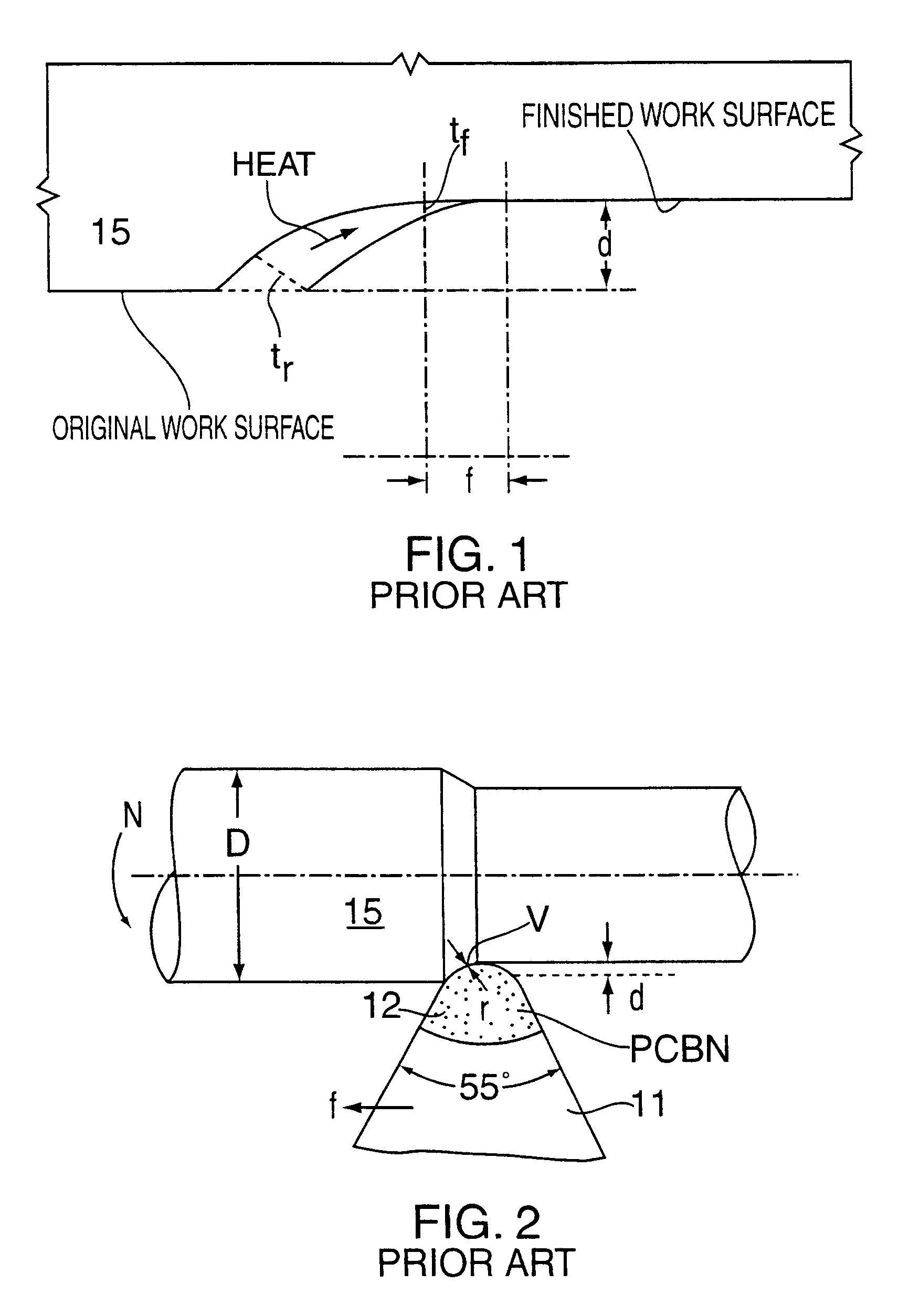Method and apparatus for hard machining
- Summary
- Abstract
- Description
- Claims
- Application Information
AI Technical Summary
Benefits of technology
Problems solved by technology
Method used
Image
Examples
Embodiment Construction
Turning to FIG. 2, at present hard turning is performed using a tool 11 having an expensive polycrystalline CBN insert 12. PCBN is a composite of small single crystal particles bonded together by sintering. A typical application is shown in FIGS. 1 and 2 where:
"f" is the feed rate, inches per rotation (hereinafter "ipr"),
"d" is the depth of cut, inches (hereinafter "in."),
"N" are the rotations per minute (hereinafter "rpm" of a workpiece 15,
"D" is the workpiece diameter, in., "V" is the cutting speed defined as .pi.DN (in. per minute), perpendicular to the paper, and
"r" is the radius (in.) of the tool insert 12.
For a sharp tool, and a reasonably rigid machine, the surface finish depends primarily upon a scallop 16 generated by the nose of the tool having a radius r. FIG. 3 shows this scallop 16 with feed (f) greatly magnified relative to r, and where R.sub.m is the depth of the scallop. R.sub.m is called the peak-to-valley roughness. To a good approximation:
R.sub.m =f.sup.2 / 8r (1)
S...
PUM
 Login to View More
Login to View More Abstract
Description
Claims
Application Information
 Login to View More
Login to View More - R&D
- Intellectual Property
- Life Sciences
- Materials
- Tech Scout
- Unparalleled Data Quality
- Higher Quality Content
- 60% Fewer Hallucinations
Browse by: Latest US Patents, China's latest patents, Technical Efficacy Thesaurus, Application Domain, Technology Topic, Popular Technical Reports.
© 2025 PatSnap. All rights reserved.Legal|Privacy policy|Modern Slavery Act Transparency Statement|Sitemap|About US| Contact US: help@patsnap.com



